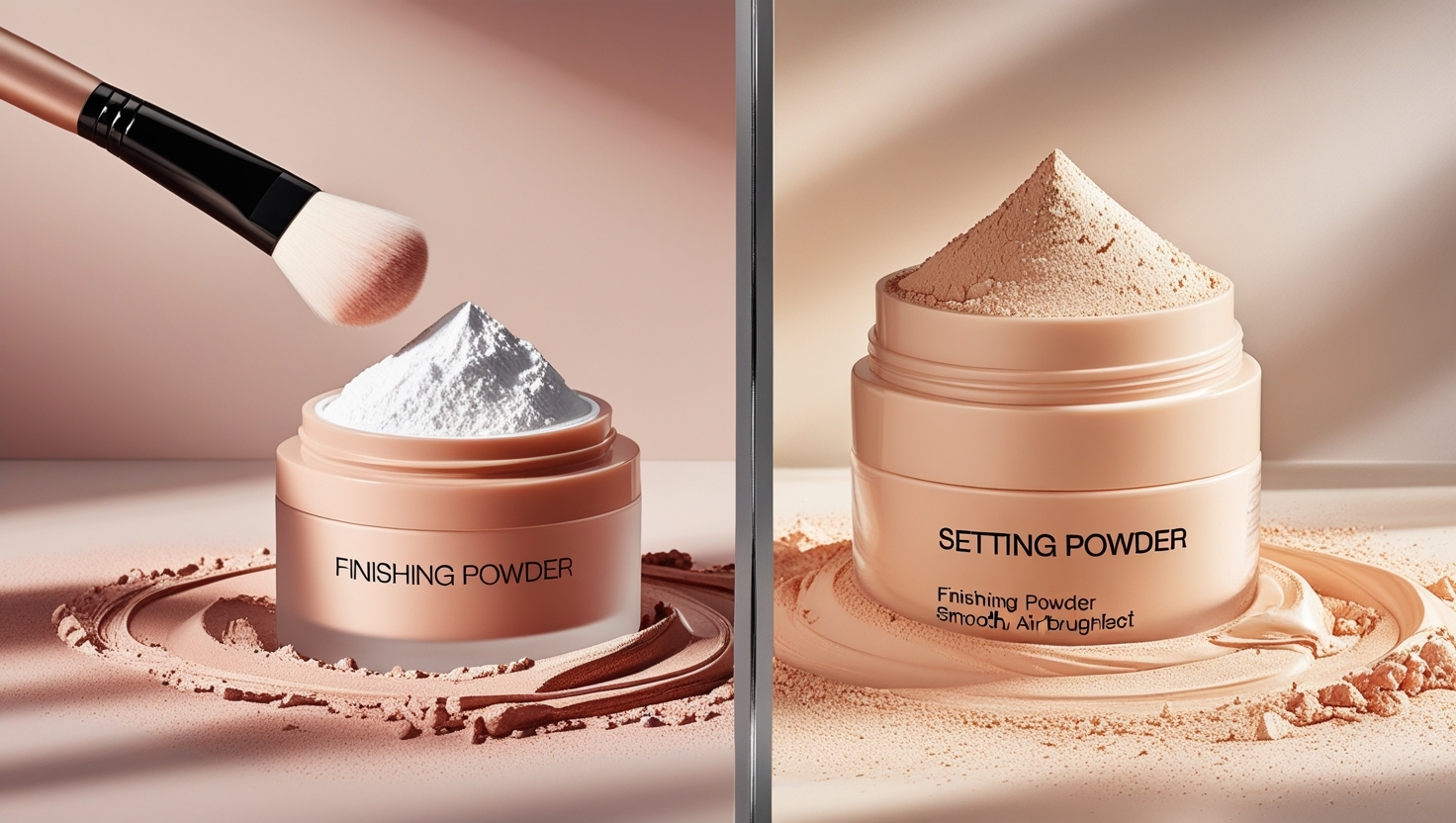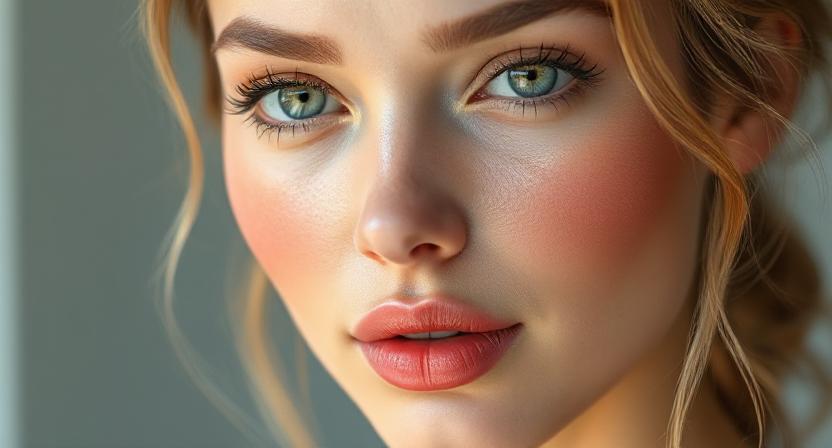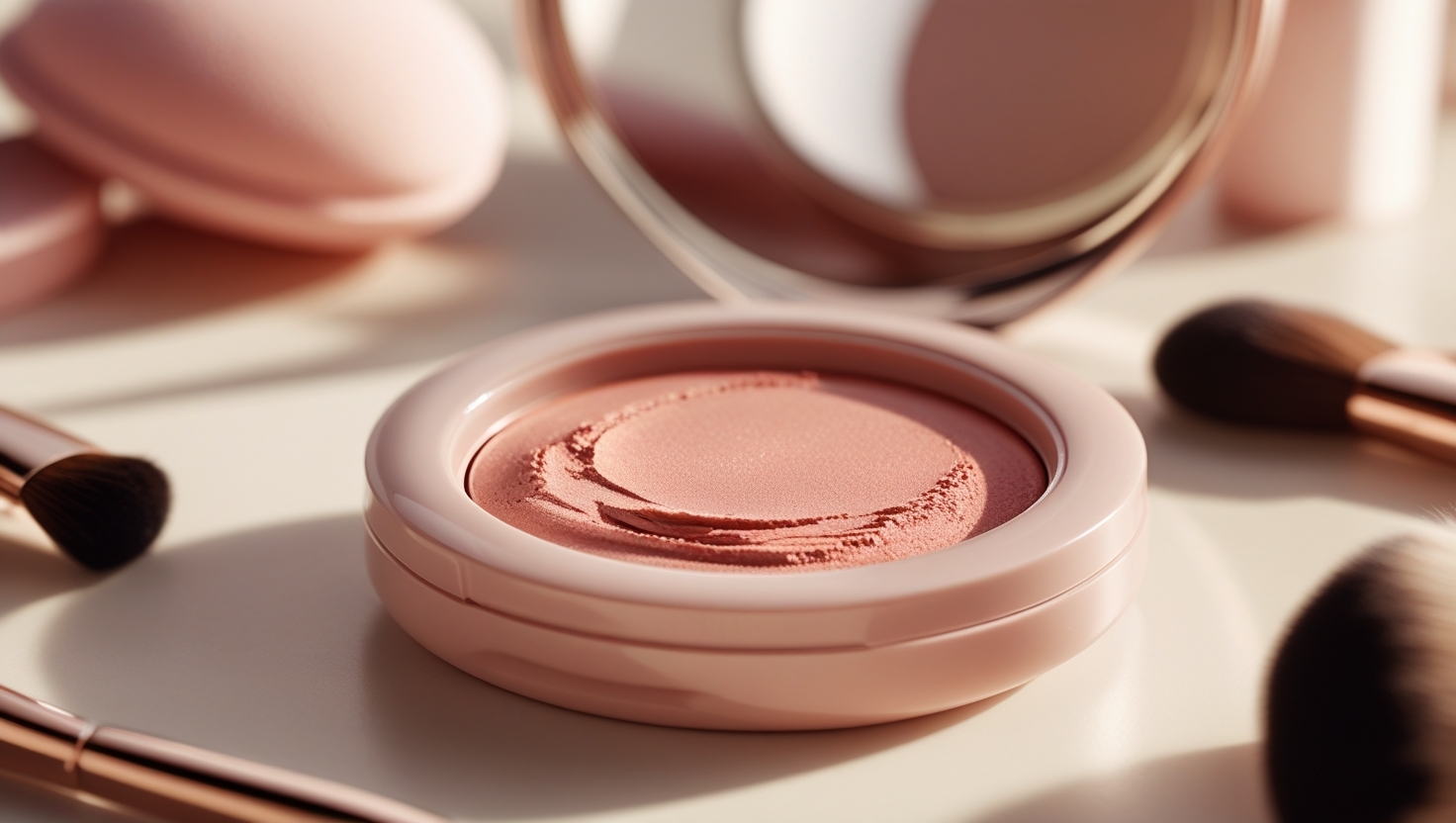
When it comes to achieving a flawless makeup look, powders play a crucial role. Among the various makeup products, finishing powder and setting powder often leave many confused about their differences and how they should be used. In this article, we’ll explore the essential distinctions between finishing powder and setting powder, their benefits, and help you decide which one is best suited for your makeup routine. Whether you’re aiming for a matte finish, a dewy glow, or long-lasting wear, we’ve got all the information you need.
What is Setting Powder?
Setting powder is a key player in ensuring your makeup lasts all day. The primary function of setting powder is to set your makeup in place by preventing it from moving, smudging, or fading throughout the day. It is typically applied after foundation and concealer to lock everything in, providing a smooth, matte finish.
Benefits of Setting Powder
- Long-lasting makeup: Setting powder helps to extend the wear time of your makeup, ensuring it stays intact without creasing or melting.
- Oil control: Many setting powders are formulated to absorb excess oil, making them perfect for those with oily skin.
- Matte finish: Setting powders are known for providing a matte finish, making them an excellent option for controlling shine, especially in areas like the T-zone.
Best Setting Powder for Oily Skin
If you have oily skin, choosing the right setting powder is crucial for controlling shine and ensuring your makeup stays in place. The best setting powder for oily skin will typically contain ingredients like talc, silica, or kaolin clay, which help absorb oil and prevent it from breaking down your makeup. Look for a translucent setting powder for an even application that doesn’t leave any heavy, cakey residue.
How to Use Setting Powder
To apply setting powder, start by using a fluffy brush or a makeup sponge to press the powder onto your face after applying foundation and concealer. Pay extra attention to areas that tend to get oily, such as the forehead, nose, and chin. For more matte control, you can apply an additional layer of setting powder in these zones.
What is Finishing Powder?
While setting powder locks your makeup in place, finishing powder is the final step in your makeup routine. The purpose of finishing powder is to provide a soft-focus effect, giving your skin a smooth, airbrushed appearance. It is lighter and more finely milled than setting powder and is typically used to add a bit of radiance or glow to your complexion.
Finishing Powder Uses
- Adds radiance: Unlike setting powder, which controls shine, finishing powder can give your skin a more luminous, dewy finish.
- Smooths skin texture: A good finishing powder can blur imperfections, fine lines, and wrinkles for a flawless appearance.
- Enhances makeup: Finishing powder can bring all your makeup together, creating a soft, seamless finish.
Finishing Powder for Dewy Look
If you’re aiming for a dewy skin makeup look, a finishing powder for a dewy look is ideal. These powders often have a subtle shimmer or glow to them, which can enhance the light on your face, giving you that radiant, fresh-from-the-spa glow. They are perfect for those with dry skin or anyone wanting to avoid the dull, matte finish that setting powders can sometimes provide.
How to Use Finishing Powder
To apply finishing powder, use a light hand and a fluffy brush. Gently sweep the powder across your face, focusing on areas where you want to add radiance or blur imperfections. This can be done after setting your makeup to enhance the final look, or on its own for a fresh, natural finish.
Setting Powder vs Finishing Powder: Key Differences
Now that you have an understanding of what each powder does, it’s time to highlight the main differences between the two:
| Feature | Setting Powder | Finishing Powder |
|---|---|---|
| Main Purpose | Sets makeup in place, prolongs wear | Creates a smooth, airbrushed finish |
| Finish | Matte or satin finish | Radiant or dewy finish |
| Texture | Slightly thicker, more powdery | Lighter, often finely milled |
| Best For | Oily or combination skin | Dry skin or for a luminous effect |
| Application | Applied to lock makeup in place | Applied as a final step for a glowing finish |
The Ideal Use Cases
- Setting Powder is perfect if you want your makeup to last longer, control oil, and maintain a matte finish throughout the day. It’s also a great option for setting foundation and concealer without creasing.
- Finishing Powder is ideal if you want to blur imperfections, add a luminous glow, or soften your makeup for a more natural, dewy finish. It’s especially beneficial for dry skin or anyone desiring a glowing complexion.
Makeup Setting Techniques: How to Make the Most of Your Powder
When it comes to makeup longevity and achieving a flawless finish, it’s not just about the powder you choose—it’s also about how you use it. Here are a few tips and techniques for using setting powder and finishing powder:
1. Layer Your Makeup Correctly
Start by applying your liquid or cream makeup products (foundation, concealer, and any liquid blush or bronzer). After blending everything out, use setting powder to lock everything in place. Once that’s set, finish with a light dusting of finishing powder to blur and smooth your makeup.
2. Use the Right Tools
- Setting Powder: A dense, flat brush or a damp beauty sponge will help you press setting powder into your skin for longer-lasting results.
- Finishing Powder: A fluffy brush works best for applying finishing powder lightly over the face to avoid over-applying and creating too much coverage.
3. Focus on Key Areas
- Setting Powder: Focus on the T-zone (forehead, nose, and chin) for oil control. These areas are most prone to shine and need a bit more powder.
- Finishing Powder: Apply lightly to areas where you want to create a soft, luminous effect, like the tops of your cheekbones and the center of your forehead.
4. Consider Your Skin Type
- Setting Powder for Dry Skin: Look for setting powders that contain moisturizing ingredients like glycerin or hyaluronic acid to prevent your skin from looking dry and cakey.
- Finishing Powder for Dewy Skin: If you’re aiming for a fresh, glowing finish, choose a finishing powder that has light-reflecting particles or a satin finish to keep your skin looking radiant.
Pros and Cons of Setting Powder and Finishing Powder
Pros of Setting Powder:
- Keeps makeup in place for hours
- Controls oil and shine
- Ideal for oily or combination skin
- Reduces the appearance of pores
Cons of Setting Powder:
- May look too matte on dry skin
- Can sometimes be too heavy if applied incorrectly
- Might accentuate dry patches
Pros of Finishing Powder:
- Gives a soft-focus, airbrushed finish
- Adds a luminous glow to the skin
- Ideal for dry or mature skin
Cons of Finishing Powder:
- Might not provide enough oil control for oily skin
- Can add too much shine if over-applied
FAQs About Setting Powder and Finishing Powder
What’s the difference between setting powder and finishing powder?
The main difference is their purpose: setting powder is used to lock your makeup in place and control oil, while finishing powder gives a smooth, airbrushed finish and adds radiance.
Can I use both setting and finishing powders?
Yes! You can use both powders in your makeup routine: first, apply setting powder to set your makeup, then apply finishing powder for a glowing, seamless finish.
Which is better for oily skin, setting powder or finishing powder?
Setting powder is generally better for oily skin as it helps control oil and keeps your makeup in place. Look for a matte finish setting powder to avoid shine.
How do I choose the right powder for my skin type?
For oily skin, choose a setting powder that controls shine. For dry skin, a finishing powder with a dewy or radiant finish will give your complexion a healthy glow.
Conclusion: Which Powder is Right for You?
Both setting powder and finishing powder have distinct roles in your makeup routine, and knowing which one is right for you will depend on your skin type, the finish you want, and the longevity you need. If you’re looking to keep your makeup in place and control oil, setting powder is your go-to. For a flawless, dewy, airbrushed finish, opt for finishing powder.
Ultimately, you don’t have to choose just one! Many makeup artists recommend using both in your routine to achieve the perfect combination of long-lasting wear and a smooth, radiant complexion.
What’s your preferred powder? Do you have any tips or favorite products to share? Drop a comment below, and let’s discuss!


